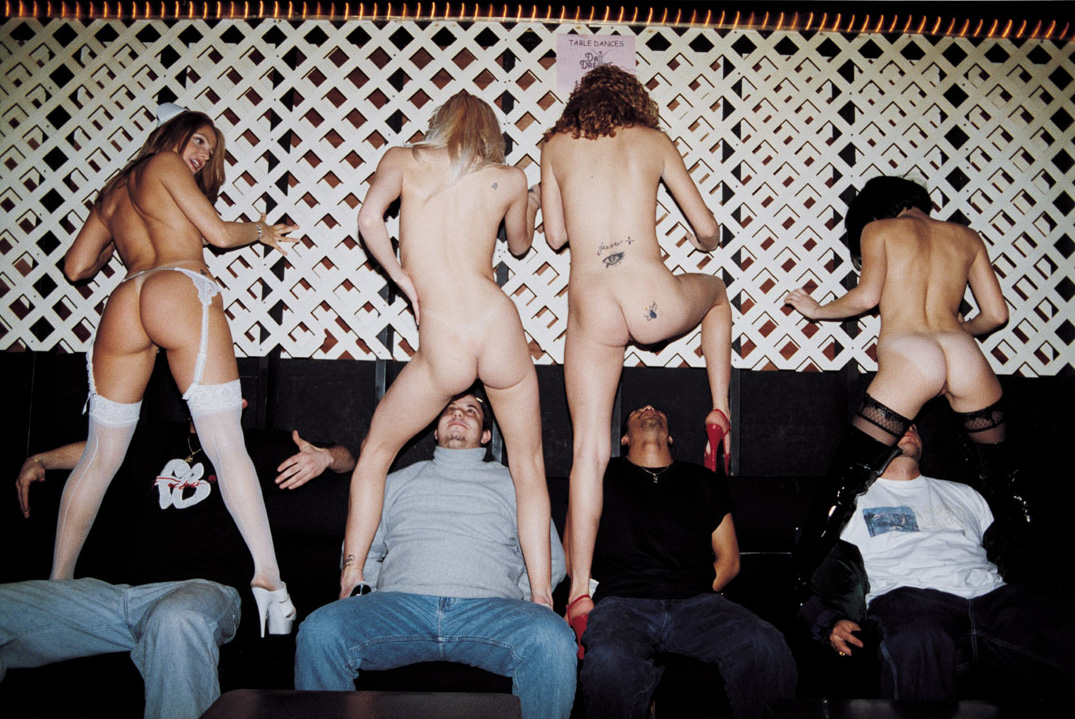
This is the first review on Tits and Sassof an academic research article on stripping. Before I get to the review proper, I wanted to qualify this post with some thoughts on academia’s relationship to stripping. First off, in the spirit of showing all my cards, I used to do academic social science research. Secondly, I’m often skeptical of academic research and reporting on stripping and sex work because of researchers’ personal biases cleverly hidden in dense, gigantic vocabulary words. Furthermore, researchers rarely have direct, authentic experience in sex work and they end up appropriating sex worker interviewees’ experience for their own accreditation.
Though I think there is great potential for increasing knowledge by using an anthropological lens to study any subculture, I also think that when the outsider’s perspective is privileged over the insider’s lived experience, the subject being studied takes on the quality of a lab rat: voiceless. I don’t think all researchers need to experience what they study. The outsider’s perspective can be illuminating but it requires a relationship between the researcher and the researched based on respect and mutual gain. Unfortunately, it’s very difficult to ascertain whether that was the case from only reading a study.
These concerns, in the case of sex work, beg the question: who gets to count as an authentic stripper anyway? Is someone who strips for money as a means to make money the only genuine stripper whereas those who strip for money as a means to research stripping are fakes? I don’t know the answer but I feel pretty confident that Katherine Frank, the author of “Just Trying to Relax”: Masculintiy, Masculinizing Practices and Strip Club Regulars” (published in The Journal of Sex Research, 2003) is a genuine stripper, whatever that is. She danced for over six years, though her research was conducted during fourteen months of stripping in “Laurelton” and thirty in-depth interviews with male patrons of strip clubs. She is also the author of G-Strings and Sympathy: Strip Club Regulars and Male Desire and co-editor of Flesh for Fantasy: Producing and Consuming Exotic Dance.
She introduces her article by citing the predominant social perception of strip clubs as reproducing male dominance, privilege and mastery over women. She states, however, that many men feel that women have the upper hand in sex work. This article is clearly an examination of the male customer’s perspective as opposed to the dancer’s feelings of empowerment or subordination to male privilege. As most academics do, Frank explains her research methodology (participant observation and interviews) and the challenges, potential biases, and opportunities inherent to these methods. Her results are limited due to the geography of the club (somewhere in the southern United States), the race/class leanings of her interview pool (mostly white and middle class) and the county specific strip club regulations (air dances only, no lap dances). Her research looks to understand the reasons that men become strip club regulars, and she argues that regulars come to the strip club not to be dominating assholes intent on degrading women, but to experience a recreational space that is pleasurable for them emotionally and physically.
The meat of the paper explores the drives that men say keep them coming to the strip club. To summarize, strip club patrons claimed they do not come to strip clubs for sexual release (reminder: the Laurelton strip club does not offer contact dances) but instead, men’s primary motivation is the desire to relax. Frank says she heard about “relaxation” so many times from every single interviewee that she decided to break down why strip club visits are perceived as relaxing. The categories are as follows:
Escape from Work and Home: Basically, strip clubs are a leisure space separate from work and home. Though obviously they aren’t the same as going to a movie theater or restaurant, they provide entertainment and service albeit in a gendered setting. Simply put, straight men enjoy looking at and talking with beautiful women. It’s a luxury. Strip clubs shake up social norms as women approach men and nude female bodies are bared in public. This is relaxing for them as opposed to their relationships with women at home, work, or even singles’ bars which they often perceive as stressful because they try to be “men” in their role as husbands, coworkers, or first dates.
Safety Paired with Excitement: Men get the excitement of tourism, a temporary rendezvous with freedom or escape from habits and responsibilities. Few of the men were actually interested in changing or discarding their relationships or obligations at home or work. They simply enjoyed the escape to another space for an allotted time. The possibility or fantasy of sexual fulfillment was seemingly more exciting than any actuality of such an encounter. Men constructed ideas of themselves as “adventurers,” “hunters,” and “explorers” and in lower class clubs they were titillated as “pioneers” of the underworld, deriving thrill from “slumming it.” In both upper and lower class clubs, men are attracted to a certain perceived lawlessness with women they perceive as sexually wild, despite the fact that actually clubs are very regulated and dancers may not be sexually uninhibited. These experiences have a safety net in that there are rules and time restrictions, and they don’t actually threaten customers’ regular lives, wives, and income.
Personal and Sexual Acceptance from Women: Regulars claim that conversation in the strip club is very important to them and dancers offer an opportunity to talk with women these men might not generally have the option to interact with for reasons such as a “lack of attractiveness, age differences, class differences (in either direction), proximity, and the women’s willingness to interact outside of the clubs.” Additionally, because men may lack strong, emotionally articulate and supportive friendships with other men, they seek this connection from their stripper “friends.” This is where the common sex worker-reported trend of sex workers acting as therapists shows up in the article. Strippers act as ego boosters, making men feel masculine and desirable. They act as nonjudgemental ears to hear the personal and sexual woes and wishes of customers.
No Pressure to Perform Themselves: Frank points out that in the strip club men have the “perfect penis” simply because they don’t have to prove it. They can view their current selves desiring beautiful women and/or bask in memories of themselves as young, healthy, and/or virile in the company of youthful and sexy women. The men are not asked to be vulnerable with their bodies, as they stay fully clothed, nor with actual sexual performance, a stressor many men struggle with in sexualized interactions at home.
Frank also points out concerns men have about being strip club customers including moral discomfort, confusion over political correctness, and shame around cultural stigmas of sex work. Men talked about not wanting to be seen in the strip club and the social perception that presumes a deficit in a man’s masculinity if he has to “pay for it” while others get it for free. They also referenced guilt because they knew their wives or girlfriends would not approve of their visits. Additionally, money was mentioned as a possible stressor. For some men, the ability to spend significant amounts to buy dancers’ time and attention increased feelings of power and masculinity, while for others it caused a sense of insecurity and/or a need to acquire more capital and/or higher incomes.

Generally, Frank points out, strip clubbing is complicated and multifaceted. Men come for a lot of reasons related to their ideas of masculinity, pleasure, and adventure and not simply or only for mysogynistic displays of male social power. Overall, I thought her article was accurate and built on a strong foundations and I particularly enjoyed reading the direct quotes from her interviews. (It’s like peeking into the heads of my customers!) There were a couple of her assertions that that struck a nerve or two but none worthy of of strong critique here, though there is one point I’d like to add. I strip in a club that does provide contact-heavy lap dances and I believe that had her research been done in a club with lap dances, the basic, instinctual pleasure of touch (sexualized, sensualized, and non-sexualized affectionate touch) would have been highlighted as a major part of the relaxation experience.
Though I found the article interesting I also felt a certain No Duh! reaction to many of her arguments. Of course men go to the strip club primarily to relax. Of course they enjoy the company of a beautiful woman who not only tolerates their behavior but seems entertained by it. Of course men seek therapeutic emotional support from strippers. Of course there is a sense of adventure in visiting the club. I’m a stripper, I know these things. However, my mom found the article, read it all and felt very enlightened by Frank’s arguments. She, like many laypeople, thinks most all my customers are scumbags, hypocrites, cheats, and desperate for sex. After her reading of the article, though, I can now say she thought that about men who visit the club and now has a different impression, one more infused with compassion and understanding of the men’s experience (and mine!).
I think that academic articles can have an important role in translating the sex work world to lay people and perhaps as more research is done by sex workers themselves then we will get research that can actually inform our work, like almost all other business sectors who derive important information from publicly and privately financed university research. For example, had Katherine Frank expanded on this research, she easily could have asked follow up questions like, “How can strippers provide the most relaxing/adventurous/therapeutic experience for customers and therefore lucrative return for themselves?” Though there’s room for argument that academic articles should not be the vehicle for conferring legitimacy to our work (a problem, I’d argue inherent to academia’s stronghold on legitimacy in knowledge production in all studies), it should instead come from our own mouths in our words, the truth is that as we struggle to overcome stereotypes and dismantle a sex-negative culture, we will have to fight at various social nodes and through many forms of knowledge transfer including academia, popular literature, music and t.v., rallies, marches, journalistic reporting, conferences, and right here on the blogosphere.
Good post. As a former strip club regular I can relate to most of her reasons that men attend clubs. I rarely achieved an erection in the clubs as the nudity and sexuality of the environment were secondary to the party atmosphere which provided a great escape from regular life. That coupled with conversation with people I would normally not interact with provided a certain thrill.
Anyway good post, thanks for bringing this to a wider audience.
Exposure breeds understanding. They should bring field tripping students to strip clubs starting at an early age. It would be more useful than learning cursive.
I know this has nothing to do with the post, but it’s exciting to see a picture taken at my home club. asdgjfgd’lgjh!! I can even see the day dreams logo in the flyer posted on the trellis.
Sounds spot-on to me. Of course, our interactions outside the strip club can be just as relaxing, if we have the courage and skill to make them that way. But I’d hate to cut in on y’all’s business. 😉
I’ve been to a strip club twice in my life, both times to ritually mark a male bonding occasion with friends, and we were glad to have the ladies to help us celebrate properly. I don’t think there’s anything untoward or misogynistic there at all.